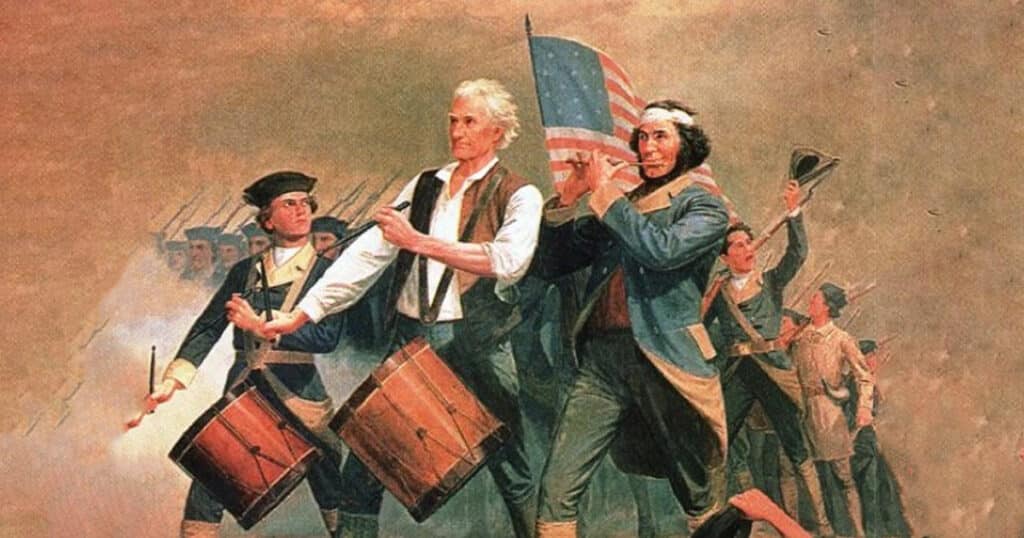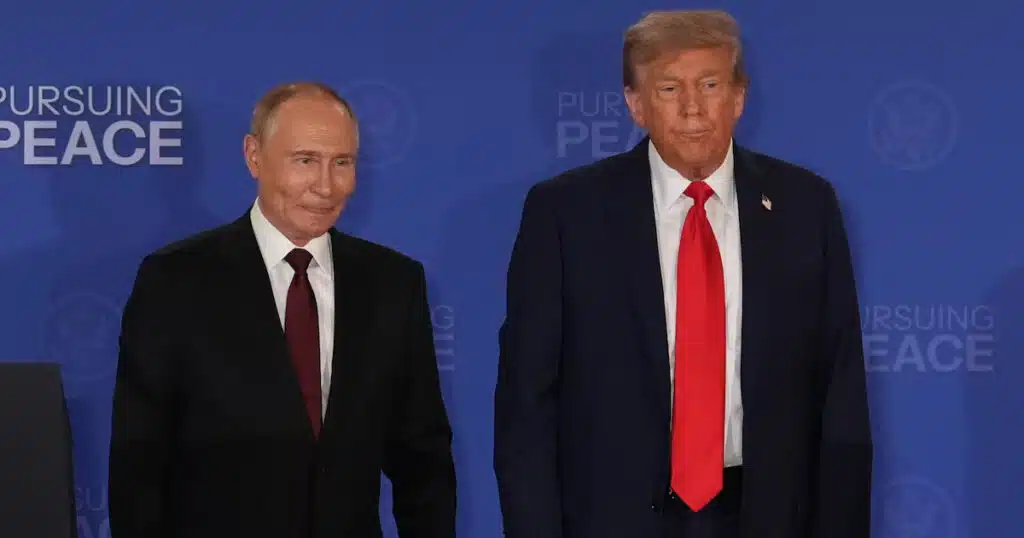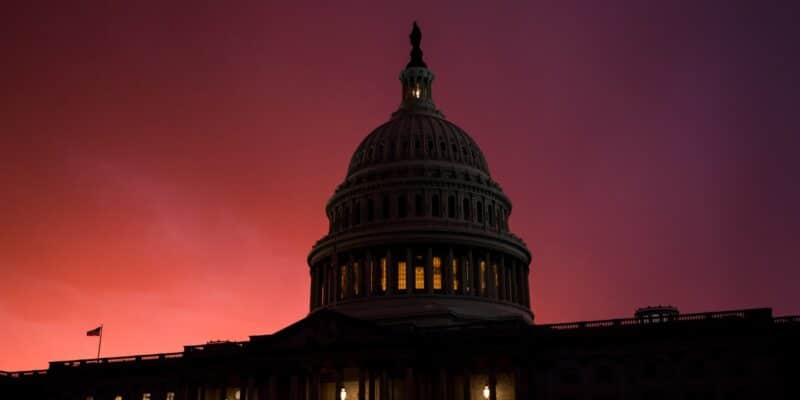
Conservatism – and the Nation – at a Crossroads
The right in America has been indulging the revolutionary spirit. National conservatives advance a new theory of conservatism to replace the old familiar ones. Common-good conservatives propose a novel regime to overturn and supplant the established political order. Still other conservatives entertain comparisons between our present discontents and the circumstances that would justify invoking the Declaration of Independence’s affirmation of the people’s right to alter or abolish forms of government that have deteriorated into “absolute Despotism.”
These conservative crusaders have their reasons for demanding bold action. Impatient with doleful criticism, feeble or counter-productive policy alternatives, inept administration, and maladroit statesmanship, they are keen to combat the left’s conquest of the federal bureaucracy and weaponization of law enforcement against conservative political opponents; government’s collaboration with the mainstream and social media to hector red America and stifle opinions that depart from progressive orthodoxy; K-12 and university education’s deterioration into indoctrination; corporations’ falling into line with the administrative state and education establishment by embracing the diversity, equity, and inclusion industry; and globalization’s market dislocations, which have fallen disproportionately on the working class.
Projects aimed at drastic change do not sit easily with the traditional conservative spirit. In 1790, Burke’s “Reflections on the Revolution in France” set the tone for conserving a political society that secures individual freedom. Since Burke, the conservative spirit in Britain and the United States has tended to reject grand efforts to remake culture and politics. That’s because the conservative spirit respects the past and the inherited. It appreciates the flaws of human nature, including the limits of human knowledge, the unreliability of human judgment, and the unruliness of human passion. It esteems the wisdom born of experience and the common sense of ordinary men and women. It distrusts innovators in moral and political theory because of their propensity to disregard stubborn realities and their partiality to utopian schemes. And, schooled in history and grounded in everyday life, it grasps the tendency of ambitious political undertakings to collapse under the weight of unintended consequences.
The gap between the new right’s ardency and audacity and the conservative spirit’s disciplined balancing of competing principles and interests raises a crucial question: Can one honorably and effectively address the enormous challenges our nation faces – implicating culture, education, the family, religion, media, the market, government, and national security – without repudiating modern conservatism’s defining characteristics?
“The new conservative dilemma: a symposium” in The New Criterion’s October issue sharply formulates the problem and provides a fascinating and instructive set of replies. In his introduction, “The Abnormal as the New Normal,” editor Roger Kimball argues that conservatism must be rethought because the conditions under which it emerged and developed have dramatically altered. Modern conservatism arose to contend with the perplexities generated by free societies, which challenge tradition by welcoming experimentation, innovation, and progress. By preserving limited constitutional government, which recognizes a private sphere in which citizens are largely free to organize their own affairs, American conservatives secured ample room to care for their families, maintain their communities, and follow their faith. That changed, argues Kimball, beginning in the mid-1930s with the New Deal’s great expansion of the federal government. Attacks on the nation’s founding principles and longstanding cultural norms in the 1960s accelerated the government’s empowerment. Another critical factor in blurring the line between public and private has been the federal government’s arrogation over the last 60 years of authority to regulate thought and action touching directly on family, community, and faith.
In “The New Conservative Dilemma,” Manhattan Institute Senior Fellow James Piereson puts conservatives’ quandary in stark terms: “to go along with the cultural revolution and the growing powers of government officials to control information, censor contrary opinion, and disorient their opponents, in which case conservatives will be silenced, enfeebled, and eventually destroyed; or, alternatively, to take aggressive steps to confront it, in which case they run the risk of disrupting the current order, with American prosperity and international power hanging in the balance.” While conservatives “are not inclined by temperament either to disrupt the system or to question the legitimacy of government,” writes Piereson, “they may have little choice but to take those risks to save themselves and perhaps the constitutional order itself.” The need for “a more aggressive politics than conservatives have practiced heretofore,” he stresses, must be oriented around the “defense of old principles newly endangered.”
In “Can conservatives still win?” my colleague, Hoover Institution Senior Fellow Victor Davis Hanson, argues that conservatives can mount a comeback and win politically provided they learn from the past. They must first understand why they have performed poorly in elections despite the relative popularity of conservative positions on hot-button issues such as illegal immigration, energy independence, public-school indoctrination in progressive dogma, and transgender surgery for minors. Hanson blames lackluster candidates who once in office govern like Democrats; the Democratic party’s alliance with the super-rich, which enables them to outraise Republicans; and progressive control of the media – print and social – as well as of the administrative state’s permanent bureaucracy.
Conservatives have several options, argues Hanson, starting with the obvious: “Raise more money, register more Republican voters, increase voter turnout, and find more resolute, charismatic, and conservative candidates to run.” While many conservatives turn inward by moving to friendly states, practicing home-schooling, and tuning out Hollywood, much more can be done. Hanson sees promise in “the growing grassroots resistance to the cultural and political left.” The resistance, which is “mostly divorced from institutional Republican politics,” depends on rejecting the false choice of either reclaiming old and venerable institutions such as the university that “have long been culturally hijacked by the left” or building new “conservative counterparts.” Conservatives, he counsels, must proceed on both fronts.
In “Conservatism reconfigured,” Daniel McCarthy, the editor of “Modern Age: A Conservative Review,” offers a grimmer assessment. “Conservatism from Peel and Disraeli to Thatcher and Reagan rested on three social foundations: the patriotism of the masses, the enduring cultural hegemony of Christianity, and the business community’s need for mass-based conservatism as a protection against the threat of socialism,” he writes. “Today the business community feels little threatened by socialism; economic nationalism and Christian morality are a greater nuisance as much of corporate America is concerned.”
Conservatives are grappling with “the disappearance of the conditions” that brought modern conservatism into existence in four distinct ways, according to McCarthy. “Restorationists” seek “a return to the industrial economy and a Christian culture.” Right-wing “nihilists” vehemently oppose the left but offer nothing of substance to remedy the current disarray. To preserve the good life as they understand it, “withdrawalists” favor “‘national divorce,’ the Benedict Option, and outright state secession.” And “accommodationists” – quislings in McCarthy’s eyes – offer apologies for “post-industrial, culturally progressive America” while enjoying its fruits in gated communities and pandering to progressive opinion by attacking the restorationists and the nihilists.
McCarthy sides with the restorationists. Not that he thinks the chances are good of rebuilding an industrial economy and reviving a Christian culture. He doesn’t much like the prospects of two other possibilities that, he believes, could provide a viable approach to the new conservative dilemma: a conservatism “reasserting Americanism – in a more passionate form than the tepid ‘proposition nationalism’ of the liberals”; or an “imperial conservatism” in which an inspirational leader tied America’s major factions to the center by balancing their competing concerns. Whatever its components, a conservatism adequately reconfigured to meet the moment’s demands, he argues, must either “regenerate the conditions that gave it political life in the nineteenth and twentieth centuries or find a different social base for the twenty-first century.”
Lawyer and journalist Margot Cleveland declares in “The promise of populism” that “the leftward lurch of the governing class” precipitated the center’s collapse and sapped ordinary people’s confidence that constitutional government can be counted on to protect the freedoms that enable them to care for their families and communities and practice their faith. Eschewing “knee-jerk opposition to the ruling class and the elite,” Cleveland advocates an enlightened populism that involves a recovery of the nation’s “governing fundamentals,” which are rooted in unalienable rights and limited government based on the consent of the governed.
Like her fellow symposium contributors, Cleveland embraces Piereson’s stringent characterization of “the new conservative dilemma.” All contributors also agree that conservatives must forge an alliance with the people against progressive elites. Only McCarthy exhibits ambivalence about the centrality to conservatism’s renewal of the nation’s founding principles. Yet the continuing resonance of individual freedom and equality under the law for working-class and middle-class Americans and their widespread desire to govern themselves provides a common ground for conservatives to engage in grassroots organizing and in drafting and implementing a more pertinent and effective legislative agenda.
Circumstances oblige conservatives to take bold action to address the nation’s enormous challenges. But the boldness must be anchored in America’s founding principles and constitutional traditions. Otherwise, the undertaking would not prove conservative in any meaningful American sense and would not yield a victory for the nation worth achieving.
This article was originally published by RealClearPolitics and made available via RealClearWire.



